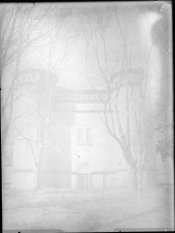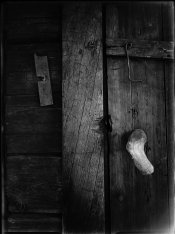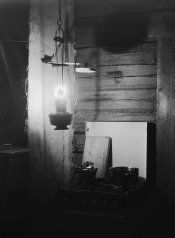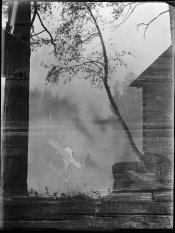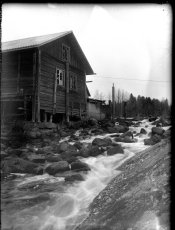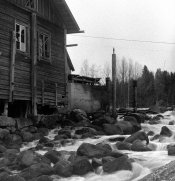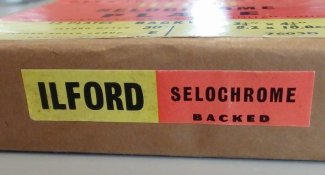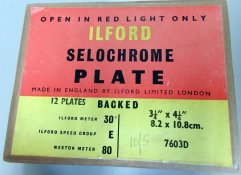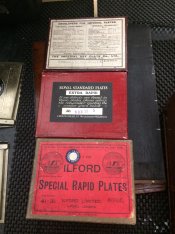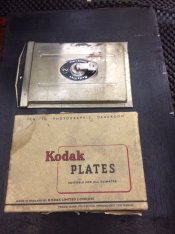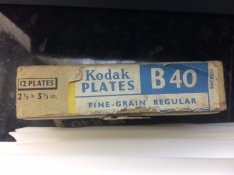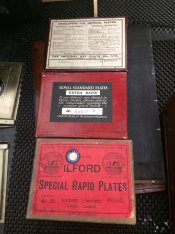Marttiko
Member
I happened to get package of old glass plates from early 1900's. I decided to use them. After some reading I concluded that they are roughly ISO6 (extra rapid indeed). First one was complete failure, and there was only very faint shapes in parts of the plate. After that I increased exposure (I've been using 4-6 stops "overexposure"), and second one was somewhat of a success. Then I started to get hang of it. I saw that Rodinal wasn't the right developer for these, and HC110 did better job. Plates are very foggy. Too short exposure leads to very faint image, but with too long exposure there is problem of solarisation (which lead to one quite interesting negative).
I got these about a year ago, and now I have shot 8 of them. Here's some of them:
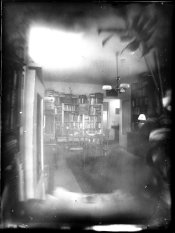
This is first success. I shot it with Fotokor no. 1 (others with Zeiss Ikon Ideal). Few years ago we (me and my spouse) found old slides used in art history classes of local university. They were in dumpster outside department of art and culture studies. We took as much as we could. Couple of times a year we and few good friends eat and drink well and watch those slides. This is one of those evenings. Shutter opened when first friend arrived and closed when last of them left. Exposure is about 7 hours, but it seems that most of the exposure happened during first hour when it was bright and we were making dinner. There's no-one in the picture, even if we sat there for 5-6 hours... Front element of lens is removed so whole room could fit in the picture.
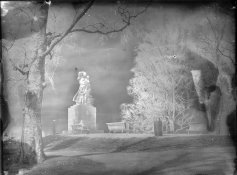
That's a statue for victims of tragedy of steam ship Kuru (https://en.wikipedia.org/wiki/SS_Kuru). I should try less exposure as there is signs of solarisation. There is also marks of poor development. I was too sloppy putting it to tray.
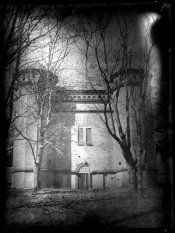
Third is cowhouse of Niemi mansion in city of Tampere, Finland. It's quite interesting building, as it's nothing like traditional Finnish cowhouses.
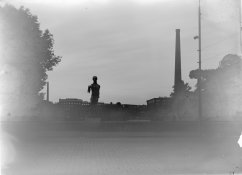
Last one is "Merchant", one of four statues on Hämeensilta (Bridge of Tavastia) in Tampere. This is negative. I tried very long exposure and it lead to solarisation which makes it look like positive.
I got these about a year ago, and now I have shot 8 of them. Here's some of them:

This is first success. I shot it with Fotokor no. 1 (others with Zeiss Ikon Ideal). Few years ago we (me and my spouse) found old slides used in art history classes of local university. They were in dumpster outside department of art and culture studies. We took as much as we could. Couple of times a year we and few good friends eat and drink well and watch those slides. This is one of those evenings. Shutter opened when first friend arrived and closed when last of them left. Exposure is about 7 hours, but it seems that most of the exposure happened during first hour when it was bright and we were making dinner. There's no-one in the picture, even if we sat there for 5-6 hours... Front element of lens is removed so whole room could fit in the picture.

That's a statue for victims of tragedy of steam ship Kuru (https://en.wikipedia.org/wiki/SS_Kuru). I should try less exposure as there is signs of solarisation. There is also marks of poor development. I was too sloppy putting it to tray.

Third is cowhouse of Niemi mansion in city of Tampere, Finland. It's quite interesting building, as it's nothing like traditional Finnish cowhouses.

Last one is "Merchant", one of four statues on Hämeensilta (Bridge of Tavastia) in Tampere. This is negative. I tried very long exposure and it lead to solarisation which makes it look like positive.








